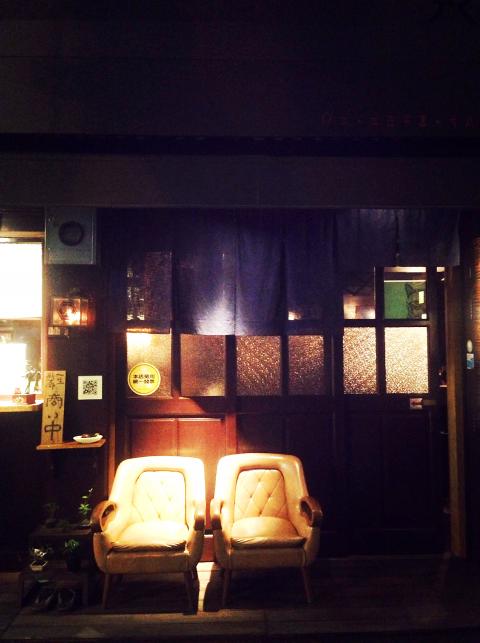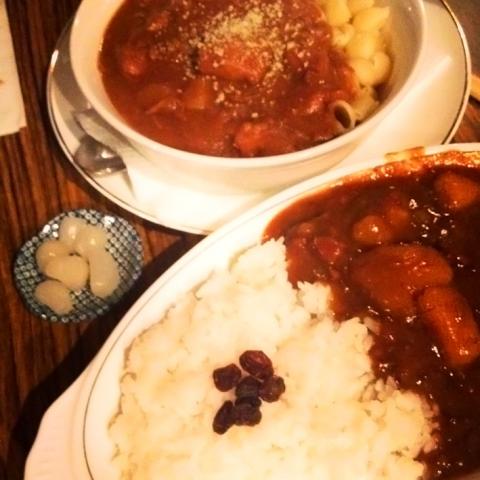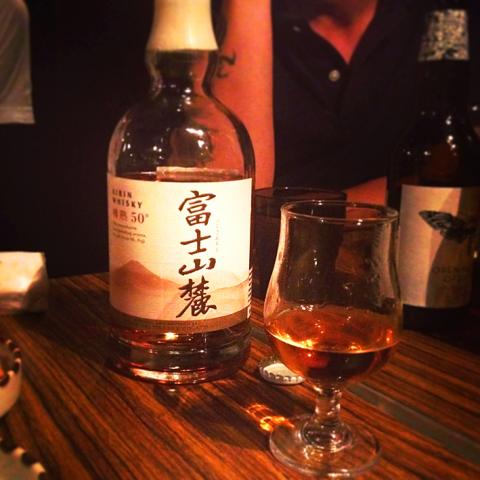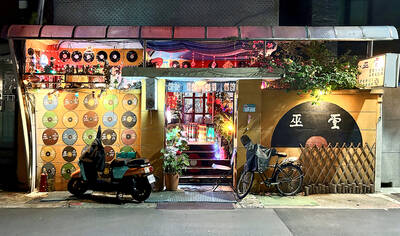From the owner of Cafe Kuroshio (咖啡黑潮) and Caffe Libero (咖啡小自由) comes Torarakuya-Taipei (寅樂屋). This time, coffee connoisseur Kao Chen-yu (高振御) waves his magic wand and transforms his parents’ modest curry joint into an old-school Japanese eatery, looking charmingly out of place in the traffic-clogged, noise-filled midtown of Taipei.
Concealed behind a row of ramshackle houses at the bustling intersection of Xinyi Road (信義路) and Guangfu South Road (光復南路), the tiny establishment emerges from a small, dark alley as a haven of rest, with warm, yellowish light shining through the glass windows. Slide open a wooden door open and you immediately feel as though you’ve stepped into an old Japanese eatery frozen in time, where both the mind and the stomach are soothed with simple, home-cooked fare and nostalgic ambiance. Inside, wood furnishings dominate the room, which is only big enough for four small tables and a two-seat bar. Vintage pendants and table lamps grace the place with sentiments of a bygone era, while the opera music heard in the background adds a touch of sophistication.
In other words, Kao once again proves his proficiency and ingenuity to capture and revive the nostalgia for a simpler time, much in the same way that he turned a 40-year-old mansion into the now popular Caffe Libero in the neighborhood surrounding Yongkang Street (永康街).

Photo courtesy of Fantasy Dining Hall
Torarakuya-Taipei specializes in only one thing — Japanese curry — and does it well. Patrons can choose the sweeter pork and chicken curry (豬雞咖哩, NT$160) or spicier beef curry (牛肉咖哩, NT$160), all of which comes served with either rice or macaroni. Like the simply delicious food prepared by your mother, the dish is a nourishing combination of the vegetables’ sweetness and tenderly cooked meat. For an extra dose of smoothness, add an egg, sunny-side up (荷包蛋, NT$20), to the curry. The small side dish of shichi fukujin pickles (福神漬, NT$15) offers mixed pickled vegetables, which is said to aid digestion.
Torarakuya-Taipei’s beverage selection includes a limited choice of beer including iKi (NT$160 and NT$180) as well as Japanese whiskey (NT$220 and NT$250 per shot). Noted for his enthusiasm for the spirit, Kao selects two types of single malt whiskey from the Nikka distilleries, one in Yoichi, Hokkaido, the other in Miyagi Prefecture, Northern Honshu, and seems eager to share his knowledge of the brew with curious diners. For those looking for good conversation, the always amicable proprietor is also a knowledgeable one to talk to about food, drink and the good life.
Another thing about Kao is that wherever he goes, there will always be good coffee brewing. For the Japanese-style eatery, the maven prepares specialties including the Iced coffee with plum wine (梅子酒冰咖啡, NT$180) and iced coffee with awamori (泡盛冰咖啡, NT$180), a type of distilled rice wine unique to Okinawa, Japan. For something sweet and children-friendly, there is a selection of hot chocolate (NT$120 to NT$150) and ice cream (NT$80 and NT$100).

Photo courtesy of Fantasy Dining Hall
Torarakuya-Taipei is a great spot to relax, enjoy a simple, delicious meal while learning one or two things about coffee, whiskey and life in general from the always amicable owner. But diners may want to bear in mind that the recently opened eatery doesn’t take reservations and is often packed during lunch and dinner rush hours.
Warning: Excessive consumption of alcohol can damage your health.

Photo courtesy of Fantasy Dining Hall

The Lee (李) family migrated to Taiwan in trickles many decades ago. Born in Myanmar, they are ethnically Chinese and their first language is Yunnanese, from China’s Yunnan Province. Today, they run a cozy little restaurant in Taipei’s student stomping ground, near National Taiwan University (NTU), serving up a daily pre-selected menu that pays homage to their blended Yunnan-Burmese heritage, where lemongrass and curry leaves sit beside century egg and pickled woodear mushrooms. Wu Yun (巫雲) is more akin to a family home that has set up tables and chairs and welcomed strangers to cozy up and share a meal

Dec. 8 to Dec. 14 Chang-Lee Te-ho (張李德和) had her father’s words etched into stone as her personal motto: “Even as a woman, you should master at least one art.” She went on to excel in seven — classical poetry, lyrical poetry, calligraphy, painting, music, chess and embroidery — and was also a respected educator, charity organizer and provincial assemblywoman. Among her many monikers was “Poetry Mother” (詩媽). While her father Lee Chao-yuan’s (李昭元) phrasing reflected the social norms of the 1890s, it was relatively progressive for the time. He personally taught Chang-Lee the Chinese classics until she entered public

Last week writer Wei Lingling (魏玲靈) unloaded a remarkably conventional pro-China column in the Wall Street Journal (“From Bush’s Rebuke to Trump’s Whisper: Navigating a Geopolitical Flashpoint,” Dec 2, 2025). Wei alleged that in a phone call, US President Donald Trump advised Japanese Prime Minister Sanae Takaichi not to provoke the People’s Republic of China (PRC) over Taiwan. Wei’s claim was categorically denied by Japanese government sources. Trump’s call to Takaichi, Wei said, was just like the moment in 2003 when former US president George Bush stood next to former Chinese premier Wen Jia-bao (溫家寶) and criticized former president Chen

President William Lai (賴清德) has proposed a NT$1.25 trillion (US$40 billion) special eight-year budget that intends to bolster Taiwan’s national defense, with a “T-Dome” plan to create “an unassailable Taiwan, safeguarded by innovation and technology” as its centerpiece. This is an interesting test for the Chinese Nationalist Party (KMT), and how they handle it will likely provide some answers as to where the party currently stands. Naturally, the Lai administration and his Democratic Progressive Party (DPP) are for it, as are the Americans. The Chinese Communist Party (CCP) is not. The interests and agendas of those three are clear, but